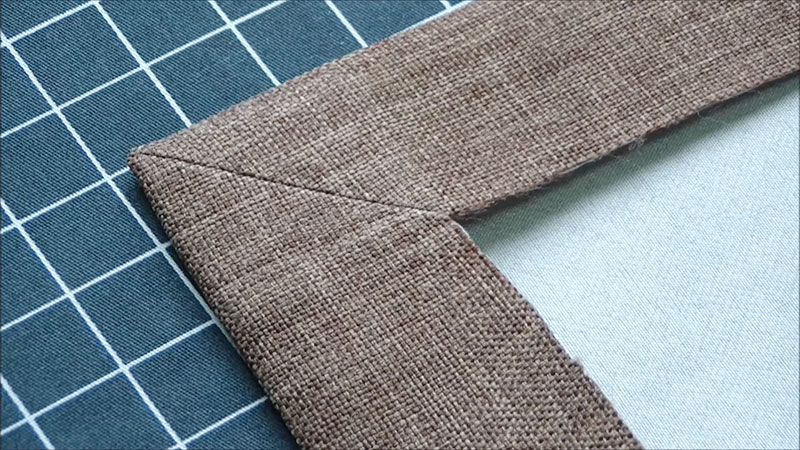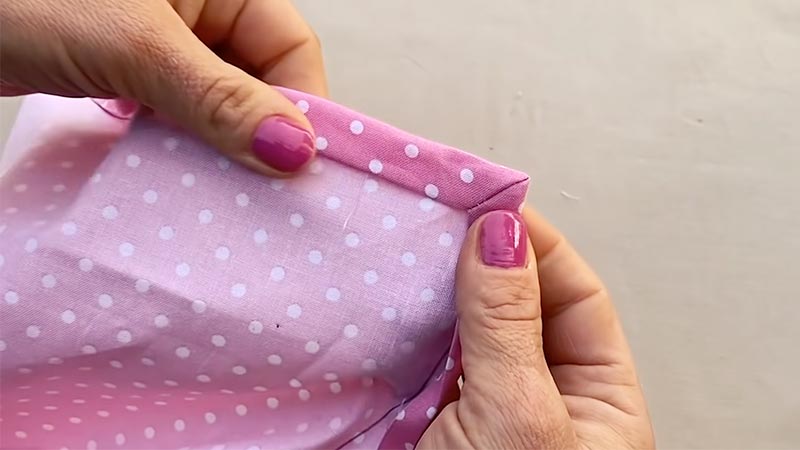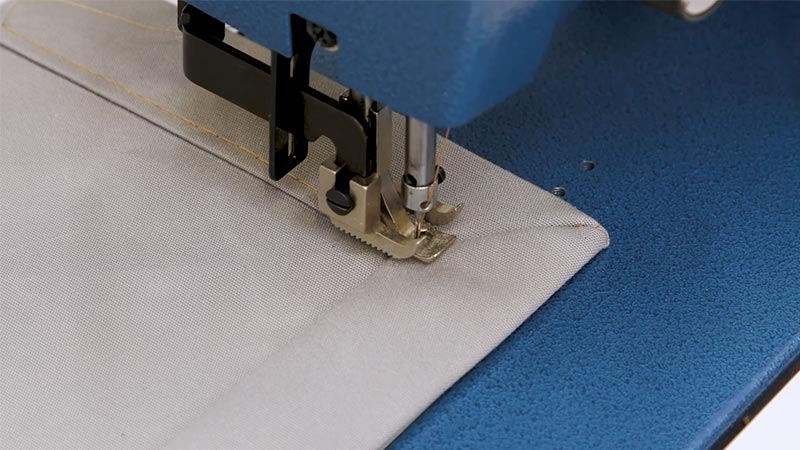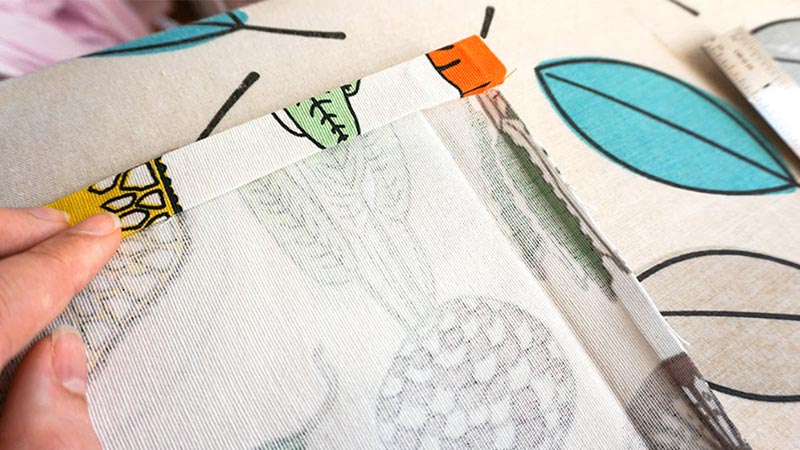In the rich tapestry of sewing techniques, the term “mitre” stands out as a fundamental skill that weaves precision and finesse into the craft.
Much like a skilled artisan, meticulously joining wood at a 45-degree angle, sewing with mitres involves the artful merging of fabrics at exacting diagonals.
This technique, rooted in woodworking principles, holds the key to achieving flawlessly sharp corners and impeccable seams, transforming the ordinary into the extraordinary.
Whether fashioning table linens, quilts, or decorative borders, understanding what “mitre” means in sewing unlocks the gateway to creating refined, professional-grade projects.
It is a technique that elevates the aesthetics and durability of sewn items, bridging the realms of form and function in the world of needle and thread.

What Does Mitre Mean in Sewing?
In sewing, a “mitre” is a precise and skillful technique employed to create impeccable corners in fabric.
It is most commonly used when sewing together two pieces of fabric at right angles, such as in quilting, tablecloth making, or other projects where sharp corners are crucial.
The term “mitre” finds its roots in woodworking practices where pieces are cut and joined at a 45-degree angle.
In the context of sewing, the concept involves folding and sewing fabric corners at this precise angle, resulting in a tidy, professional finish. It’s a fundamental skill that elevates the quality and appearance of many textile projects.
Key Features of Mitre in Sewing:
Precision
Mitring is all about precision. By folding the fabric at a 45-degree angle and sewing it with care, this technique ensures the creation of clean, sharp lines and well-defined corners.
Whether it’s for napkins, placemats, or decorative borders, mitres add a touch of sophistication.
Elimination of Bulk
Mitres serve to eliminate excess fabric in corners. By skillfully cutting away surplus material and folding it diagonally, this technique effectively reduces bulk.
This is particularly valuable in tablecloths and curtains, where smooth, flat corners are essential for an elegant appearance.
Neat Finish
One of the most prominent features of mitring is its ability to deliver a professional and polished finish.
Whether you’re working on a delicate silk blouse or a robust denim apron, mitred corners lend a refined and finished look to your sewing projects.
Versatility
The versatility of mitring extends across a spectrum of sewing projects. It’s not confined to specific fabrics; it can be applied to a wide range of materials, from lightweight chiffon to heavy denim. This adaptability makes it a versatile tool in the sewer’s repertoire.
Durability
Beyond aesthetics, mitres enhance the longevity of a sewn item. By reinforcing corners and preventing fraying, they contribute to the durability of the finished product.
This is particularly valuable in items that face regular wear and washing, like garments and linens.
Uses of Mitre in Sewing

The mitre technique in sewing is a versatile and valuable skill with various practical uses.
Here are some common applications:
Hem Corners
Mitres are especially useful for sewing hems on garments, such as dresses and skirts, as well as on items like tablecloths and curtains.
By creating mitred corners, the fabric drapes smoothly and uniformly, avoiding bulky or uneven folds at the edges. This technique is essential for achieving a tailored and professional finish.
Quilt Binding
Quilters rely on mitres when attaching binding strips to the edges of quilts. The mitre technique ensures that the binding lies flat against the quilt’s perimeter, resulting in a seamless and visually pleasing border.
Mitres also facilitate the joining of binding strips at quilt corners, preventing overlaps and maintaining a consistent look.
Napkins and Table Linens
Whether you’re sewing cloth napkins or crafting elegant tablecloths, mitres play a crucial role in creating refined corners.
Mitres eliminate excess fabric at the corners, preventing unsightly bunching, and contribute to an overall polished appearance that enhances the dining experience.
Pillow Covers
Mitres are employed in sewing pillow covers, particularly when crafting decorative pillows or cushion covers.
By using the mitre technique, the corners of the pillow covers remain crisp and well-defined, elevating the overall aesthetic of the piece.
Curtain Valances
When designing curtain valances, mitres are essential to ensure that the fabric drapes gracefully and maintains a tailored finish at the corners.
Mitres allow for seamless seam intersections, resulting in valances that look custom-made and professionally sewn.
Neckties and Accessories
In the world of sewing accessories like neckties, mitres are indispensable for creating the pointed ends that are characteristic of these items.
The sharp, angular corners achieved through mitring enhance the refined and elegant appearance of neckties and other fashion accessories.
Fabric Boxes and Baskets
Mitres are applied in sewing fabric boxes, baskets, and organizers. By using mitred corners, these fabric structures fit together neatly and securely. The technique adds both visual appeal and structural integrity to these functional items.
Appliqué
Mitres are a handy technique in the realm of appliqué work. They enable the creation of precise and pointed shapes, enhancing the level of detail and craftsmanship in appliqué designs.
What Does Mitre Mean in Sewing Clothes?

In sewing, a mitre refers to a technique used to create neat, precise corners, often seen in items like tablecloths, napkins, or quilt borders.
To make a mitre, the fabric at a corner is folded and stitched at a 45-degree angle, allowing it to lay flat and form a clean, diagonal seam.
This technique helps reduce bulk and provides a polished appearance, ensuring the corner looks sharp and well-finished.
Mitres are crucial for achieving professional-looking results in sewing projects, as they eliminate excess fabric and prevent unsightly bunching or folding at corners.
Whether you’re working on clothing, home decor, or quilting, mastering the mitre technique is valuable for creating tidy, well-crafted seams and corners.
What Does Mitre Mean in Sewing Fabric?

In sewing fabric, a mitre refers to a technique used to create clean, sharp corners or seams, often in items like hems, borders, or bindings.
To make a mitre, the fabric at a corner is folded and stitched at a 45-degree angle, allowing it to lay flat and form a precise diagonal seam.
This method reduces bulk and eliminates excess fabric, resulting in a polished and professional appearance.
Mitres are commonly used in various sewing projects to ensure corners look neat and well-finished, preventing bunching or uneven folds.
Mastering the mitre technique is essential for achieving high-quality, tidy seams and corners in clothing, home decor, and other fabric-based creations.
FAQS
Can the mitre technique be used on stretchy fabrics like jersey or spandex?
Yes, the mitre technique can be applied to stretchy fabrics, but it may require extra care and stabilization to prevent puckering or distortion at the corners.
Are there specific tools or notions that can aid in achieving perfect mitres?
While the mitre technique can be done with basic sewing tools, using a clear acrylic ruler or a specialized mitre ruler can make measuring and folding the corners more precise.
Can you use the mitre technique for curved or rounded edges in sewing?
Mitres are typically used for straight-edged corners and seams. For curved or rounded edges, techniques like clipping or notching are more appropriate to achieve a smooth finish.
Are there different types of mitre techniques for various fabric weights?
The basic mitre technique remains the same, but the choice of interfacing and seam finishes may vary depending on the fabric’s weight and thickness.
Can mitres be used to create three-dimensional effects in fabric, like origami-inspired designs?
Yes, skilled sewists can use mitres in conjunction with folding techniques to create intricate three-dimensional fabric structures and designs, often seen in origami-inspired textile art.
To Recap
In sewing, understanding what a mitre means is fundamental for achieving polished, professional results.
This versatile technique, involving the careful folding and stitching of fabric at a 45-degree angle, is the key to creating clean, crisp corners and seams in a wide range of projects.
Whether you’re sewing garments, quilts, table linens, or decorative accessories, mastering the art of mitring ensures that corners lay flat, free from bulk or bunching.
It’s a technique that adds an element of finesse and precision to your creations, transforming the ordinary into the extraordinary.
By embracing the mitre technique, you elevate your sewing skills and achieve a truly refined finish.
Leave a Reply